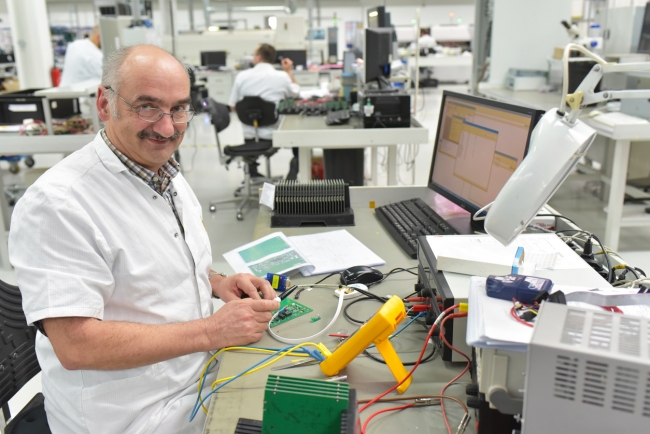5 minute read • published in partnership with Flowlens
Insight: 3 steps to success with new digital systems
The Covid experience has increased the focus on using technology to improve business processes and provide greater visibility for a workforce who no longer work in the same office every day. Rich Dale from Flowlens shares his thoughts on how digital systems support this and the 3 steps to success.
Relying on being in the office, having access to local spreadsheets and data, and even just the knowledge in other people’s heads, isn’t something we take for granted anymore.e
For many, this could be the first major technology project that the business has embarked on – so it’s hard to know where to start.
Iain Smith, managing director at Fisher Smith Machine Vision, says: “One of the key drivers for us was remote working, we knew cloud systems would give us that flexibility and stand us in good stead for future lockdowns. We just knew we needed to get away from our reliance of office-based systems and Covid gave us that motivation.”
So, what system do you need? And, what resources are going to be needed to make sure it works?

Using technology to improve business processes and provide greater visibility is now more of a focus for many different manufacturers / Picture: Getty/iStock
How do you know if you’ve got a problem?
Sometimes the problems are very obvious:
• Inconsistent data
• Uncertainty about project margins
• Unsure of stock levels
• Multiple spreadsheets containing the same information
If you have ever heard “I don’t think those figures are right” in a management or board meeting, then the chances are there isn’t a single version of the truth that everyone is working from.
How do you get your team on board?
Before you launch into Google searches to try and find an app for that, it’s important that you build consensus across the team about the problem that needs to be fixed.
Any successful technology implementation requires the input and buy-in of people across your business. The ability of the new system to deliver the return on investment you’re looking for depends on it being used day and daily by your team.
Adrian Hunter, finance director at Talbotts Biomass Energy Systems, says: “You have to show people the reason why you’re considering change. And you know, once you push the door open and get their input and ideas, people understand what it is you’re trying to do. They see the benefits and the visibility of everything in one place, then they come along, and at Talbotts, they certainly came along with us on the journey.”
So it’s essential to get them on board at the very beginning of the project. No one knows better what systems are creaking under the pressure of growth than the people having to use them every day.
Good people can mask bad systems – they develop work-arounds to get the job done. Releasing them from this and back to the really valuable work they do (which is why you hired them in the first place) can drive growth and increase capacity with no requirement to hire new staff.
An additional benefit of this collaborative approach is to build an understanding of the customer journey and the points in the process that are causing wasted time, money and goodwill.
But will it work?
Remember the person in the meeting who said “I don’t think those figures are right”? By implementing a system that presents everyone with a single version of the truth you should never hear those words again. So now your management reports and board meetings can focus on taking positive action based on data you trust to help improve business performance.
The trust that now exists in the data also leads to greater confidence in the decisions you and your team make – which in itself allows everyone to move forward in a more engaged way.
Whether you want to tackle sales issues, margin issues, stock issues, production issues, project delivery issues or customer support issues, the information will be right there in front of everyone who needs to see it.

By implementing a system that presents everyone with a single version of the truth, manufacturers can positive action based on data they trust to help improve business performance / Picture: Getty/iStock
Before you buy a system
Hold on – it’s still not time for those Google searches. In order to make sure you buy the right system for your business and successfully implement the technology you need to have a firm idea about the problem that you are trying to solve or the opportunity that you would like to unlock.
The first stage of this is to sit down with your team and map out your process. Go through the entire customer journey from enquiry to sale, production, delivery and invoicing. Then look at your after sales service and support.
Do all of this from the customer perspective – very often when we take a step back and look at the process that we put our customers through the answer to why we’re not selling more becomes a lot clearer.
This process will give you a clear picture of how the business currently functions, where the problems occur and how processes can be supported and improved. You can then identify process bottlenecks and the priorities for improvement.
Wayne Cramer, managing director at GW Energy, says: “We knew we wanted to move to the cloud, but we didn’t just want to duplicate existing processes in a new system and saw it as a chance to streamline every part of the process. By getting key people around the table to challenge the existing way of doing things, we ended up with a more efficient process map, and that made it easier to find a system that best suited our needs.”
At this stage you will have a system specification that includes far too much. You should now identify the ‘must haves’ and park the ‘nice to haves’ for later. Your ‘must have’ list should be made up of the system and process improvements that will have the biggest impact on the business.
The clarity created by following these steps makes it much more likely that you will choose the right system, implement it successfully and see the real business benefits it has to deliver in order to be worth the effort.
